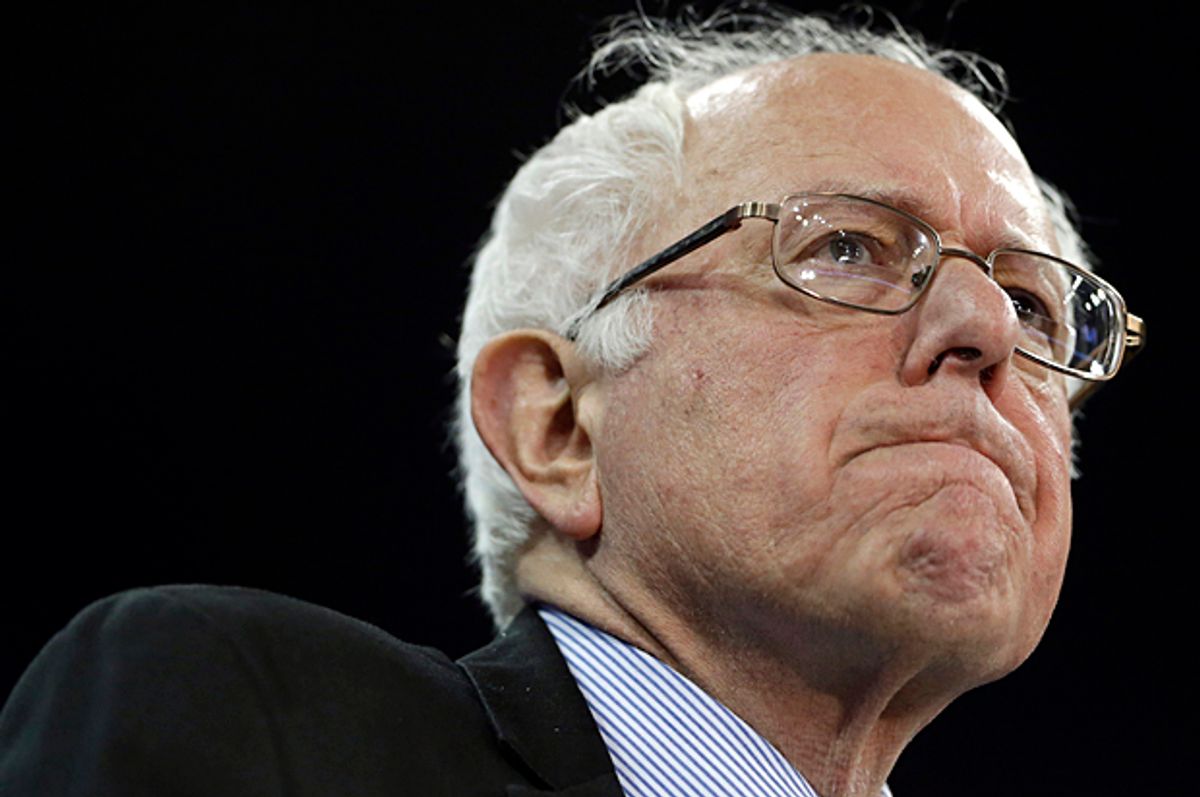 Washington Post writer Philip Bump published an article on Monday titled, “Bernie Sanders keeps saying his average donation is $27, but his own numbers contradict that."
Washington Post writer Philip Bump published an article on Monday titled, “Bernie Sanders keeps saying his average donation is $27, but his own numbers contradict that."
The headline gives the impression that Sanders is wildly off-base about this oft-repeated figure. Bump presents the piece as a forensic examination of the question, “How is it that the average has stayed so consistent over time?” He offers a “few ideas” for why this might be, including that “averages change more slowly as you add more data,” and at some point, the $27 donation “became a thing.” In fact, Sanders’ website “encourages that number” by providing a $27 donate button on the website, Bump notes.
All of those observations are fine and good, if slightly less than newsworthy (last I checked, middle-school math lessons on how averages work aren’t exactly breaking). But the article gets fishy when Bump delivers his final point, declaring that, “$27 isn't really accurate.” After performing numerous calculations, based on data from the Sanders campaign, he comes to the shocking conclusion that the average donation is… $27.88 (gasp!).
Sanders' rapid response director Mike Casca replied on Twitter with a correction to Bump, stating that, as of 11:13 Monday morning, the average donation is $27.89—or as Casca calls it, “$27 and some change, but thanks for playing.”
Either way, the final figure is not far off from the basic claim of the Sanders campaign, and certainly is not as misleading as the headline of Bump’s article would have you believe. Not surprisingly, Bump’s article launched an angry response, prompting him write a followup piece on Tuesday titled, “The day I inadvertently jammed $27 into a very angry hornet’s nest.”
Bump reports that he “received thousands of negative tweets, negative comments on Facebook, and any number of emails—excluding the scores of spam emails I'm getting because someone signed me up for them in bulk.” The “tenor and volume” of the feedback was unusual, Bump added, “particularly given that the piece was innocuous, as I saw it. It wasn't a fact-check; it was a math lesson.”
“It's clear from the story itself that I don't see this as any sort of lie on the part of the Sanders campaign, but then who reads the story anymore?” he continued. “Part of the problem, though, is that the headline was viewed as suggesting dishonesty on the part of Sanders' campaign,” he said. “The working headline for the piece was ‘How does Bernie Sanders's average donation stay at $27?’ but we (my editors and I) ended up choosing a headline that was more provocative. And provocative headlines provoke.”
There is a problem, however: Bump’s title is misleading. Not provocative, misleading.
All journalists are under pressure to construct gripping headlines with the power to provoke and ratchet up article views. But we are also required to be accurate, especially in the midst of a hotly contested primary in the days leading up to the important New York vote. Especially those of us who write from powerful and far-reaching platforms.
Bump, who declined an interview with AlterNet, fell short of accountability for his misjudgment, instead rattling off a list of reasons why Sanders supporters might feel overly angry, when in fact they are not being slighted.
“First, it was viewed as an attack on the heart of what appeals to many Sanders supporters: his lack of big donors,” he writes, then adding: “Second, it came from the Washington Post, an outlet that some Sanders supporters view as being either biased or representative of the power structures that Sanders is challenging.”
Bump goes on to write that “there is an obvious willingness by Sanders supporters to assume that institutions of power are out to get them—and to lash out in response.”
Bump’s blithe dismissal of these concerns is telling, if consistent with the slant of his employer. I invite him to respond to the real concerns expressed by Sanders' supporters and media consumers, not the irrational and furious masses he has constructed.
Perhaps he could consider the criticisms of someone like Zein El-Amine, a Sanders supporter, Lebanese-American poet and university professor in Washington, D.C.
“This article is the height of absurdity when you look at the amount of research that the reporter went through to prove this minute difference,” El-Amine told AlterNet. “Especially in light of the fact that, if there is one thing that any American can say about the Sanders campaign, it is that it has proved that the super PACs are not going to rule the day with their big donations, that candidates can beat the super PACs by speaking directly to the public and speaking to their long-neglected issues."

Shares